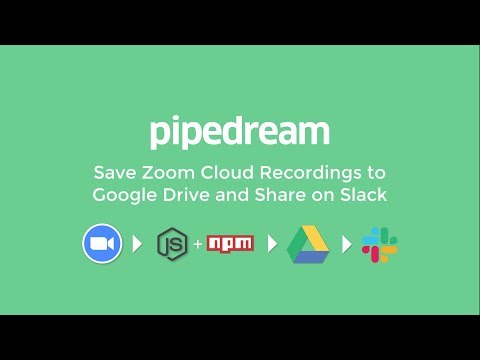What do you want to automate
with Zoom and QuickBooks?
Prompt, edit and deploy AI agents that connect to Zoom, QuickBooks and 3,000+ other apps in seconds.
Trusted by 1,000,000+ developers from startups to Fortune 500 companies
Popular Ways to Connect Zoom with QuickBooks#
Popular Zoom and QuickBooks Triggers#
Emit new event each time a meeting is created where you're the host
Emit new event each time a meeting starts where you're the host
Emit new event each time a new recording completes for a meeting or webinar where you're the host
Emit new event each time a meeting ends where you're the host
Emit new event each time a meeting is updated where you're the host
Popular Zoom and QuickBooks Actions#
Overview of Zoom#
The Zoom API lets you tap into a rich set of functionalities to enhance the video conferencing experience within your own app or workflow. With the Zoom API on Pipedream, you can automatically create meetings, manage users, send meeting notifications, and more, orchestrating these actions within a broader automation. This allows for seamless integration with other services, enabling both data collection and action triggers based on Zoom events.
Pipedream workflows allow you to run any Node.js code that connects to the Zoom API. Just create a new workflow, then add prebuilt Zoom actions (create a meeting, send a chat message, etc.) or write your own code. These workflows can be triggered by HTTP requests, timers, email, or on any app-based event (new tweets, a GitHub PR, Zoom events, etc).
Connect Zoom#
import { axios } from "@pipedream/platform"
export default defineComponent({
props: {
zoom: {
type: "app",
app: "zoom",
}
},
async run({steps, $}) {
return await axios($, {
url: `https://api.zoom.us/v2/users/me`,
headers: {
Authorization: `Bearer ${this.zoom.$auth.oauth_access_token}`,
},
})
},
})
Overview of QuickBooks#
The QuickBooks API allows for streamlined financial management within Pipedream's ecosystem, enabling automated accounting and data syncing across various platforms. With this API, you can manipulate invoices, manage sales receipts, handle expenses, and synchronize customer data. It's a robust tool for financial oversight and automation that can save time and reduce errors for businesses of all sizes.
Connect QuickBooks#
import { axios } from "@pipedream/platform"
export default defineComponent({
props: {
quickbooks: {
type: "app",
app: "quickbooks",
}
},
async run({steps, $}) {
return await axios($, {
url: `https://accounts.platform.intuit.com/v1/openid_connect/userinfo`,
headers: {
Authorization: `Bearer ${this.quickbooks.$auth.oauth_access_token}`,
"accept": `application/json`,
"content-type": `application/json`,
},
})
},
})
Related Videos#
